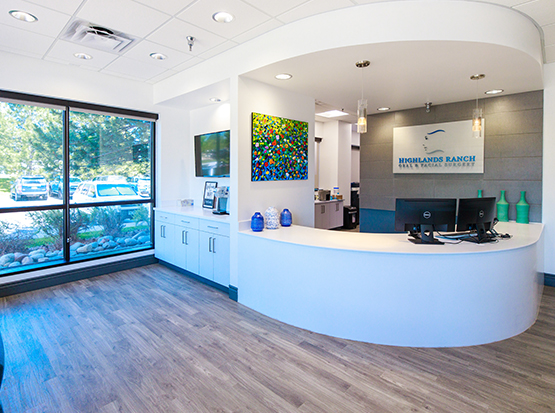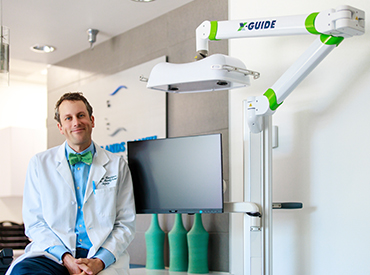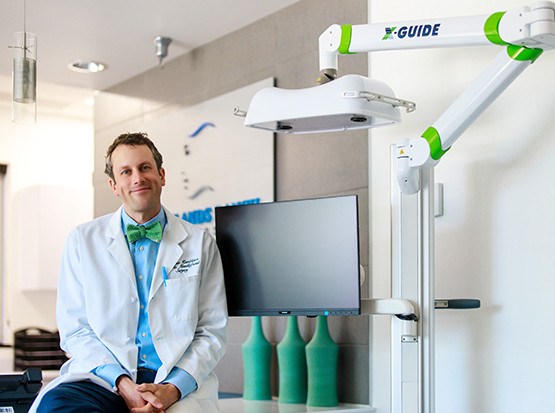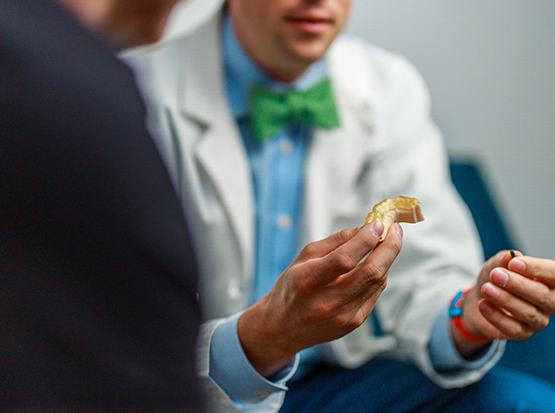
Cone Beam CT Scan
The i-CAT FLX V17 system gives our oral and maxillofacial surgery practice state-of-the-art technology to help Dr. Hambleton diagnose potential issues more accurately and provide treatment with unprecedented confidence. Unlike a traditional spiral CT scanner, this 3D system utilizes cone beam CT technology and provides precise, crystal-clear digital images while minimizing your exposure to radiation.
Our i-CAT enables us to perform a wider range of diagnoses and treatments in our office, helping to reduce multiple visits. The i-CAT FLX V17 scanner allows us to choose the field of view, or scanning area, that suits your specific treatment needs. Unlike the majority of CBCT systems, the i-CAT does not cross-stitch any of the images it captures, thus ensuring optimal accuracy.
The i-CAT FLX V17 system brings the latest 3D technology to Highlands Ranch Oral & Facial Surgery, providing unmatched visualization of anatomical detail which aids in treatment planning and helps us to better explain the particulars of your case, as well as address any questions you may have. Dr. Hambleton can use this innovative technology to quickly and easily share 3D images of the area of concern with your referring doctor – allowing the doctors to collaborate on your care, improving your experience, and delivering a positive treatment outcome.
Guided Surgery
Highlands Ranch Oral & Facial Surgery is one of the few oral surgery clinics in the Denver area that offers 100% guided dental implant surgery. Guided surgery allows for highly precise and accurate implant placement utilizing smaller incisions and shorter operating times. This means less pain and shorter recovery periods for our patients. It also allows for predictability and improved esthetics when the implant is finally restored.
So what exactly is guided surgery? To answer this question, let’s consider the following case. Patient John presents to the office on referral by his general dentist for an implant. A 3-dimensional image, or CBCT scan, of John’s mouth is obtained, and the bone at the site of the missing tooth is analyzed. The mouth is then scanned with an intraoral scanner, which provides a digital impression of John’s gums and teeth. The digital impression provides Dr. Hambleton with the size, shape and contour of the gums and teeth, all things that are required for implant treatment planning.
The data sets from the CBCT and digital impression are then combined in a format that renders a digital reconstruction of John’s mouth. Using this information, Dr. Hambleton and his team digitally plan for a crown to replace the missing tooth. Once we are satisfied with the appearance of the crown, we then digitally place the implant such that it supports the crown. The information about the position and orientation of the implant is then converted into a small plastic guide, which fits on John’s teeth similar to a retainer or a night guard. Using this guide, we place the implant with precision and accuracy.
Guided surgery is the future of dentistry, and particularly so regarding implant dentistry. Before the start of any surgery, we can digitally plan every step. This reduces the risk of any surgical complications. It also reduces the risk of any restorative complications. If you need an implant, and are interested in learning more about guided surgery, please contact us for a consultation.




